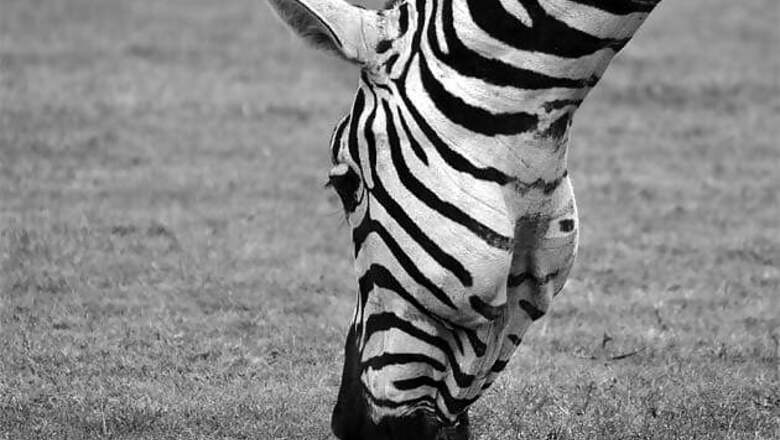
views
London: Scientists claim to have finally solved the mystery why zebras evolved their distinctive black and white stripes - to keep blood-sucking flies at bay.
Researchers from Hungary and Sweden, who detailed their study in the Journal of Experimental Biology, said that this pattern of narrow stripes makes zebras "unattractive" to the flies.
And the key to this effect is in how the striped patterns reflect light, said Susanne Akesson, from Lund University in Sweden, a member of the international team that carried out the study.
"We started off studying horses with black, brown or white coats. We found that in the black and brown horses, we get horizontally polarised light," Akesson was quoted as saying by the BBC News.
This effect made the dark-coloured horses very attractive to flies, she said.
It means the light that bounces off the horse's dark coat - and travels in waves to the eyes of a hungry fly - moves along a horizontal plane, like a snake slithering along with its body flat to the floor.
The team found that horseflies, or tabanids, were very attracted by these "flat" waves of light. "From a white coat, you get unpolarised light reflected," Dr Akesson explained.
Unpolarised light waves travel along any and every plane, and are much less attractive to flies. As a result, white coated horses are much less troubled by horseflies than their dark-coloured relatives, the researchers pointed out.
Having discovered the flies' preference for dark coats, the team then became interested in zebras. They wanted to know what kind of light would bounce off the body of a zebra, and how this would affect the biting flies that are a horse's most irritating enemy.
They placed a blackboard, a whiteboard and several boards with stripes of varying widths at a field in Hungary. "We put insect glue on the boards and counted the number of flies that each one attracted," Dr Akesson said.
It was found that the striped board that was the closest match to the actual pattern of a zebra's coat attracted by far the fewest flies, even less than the white boards that were reflecting unpolarised light, she said.




















Comments
0 comment